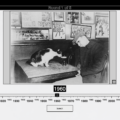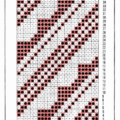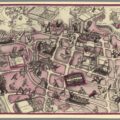What Remains by Muhannad Shono 2, Desert X 2025, Coachella Valley, California
![The image depicts a vast desert landscape under a clear blue sky. In the foreground, there are several large, dark-colored fabric structures, possibly tarps, laid out on the sandy ground. These structures are irregularly shaped and appear to be weathered, suggesting they have been exposed to the elements for some time. The desert is sparsely vegetated, with small shrubs and bushes scattered across the sandy terrain.</p>
<p>In the background, a majestic mountain range stretches across the horizon, its peaks capped with snow, indicating a significant elevation and possibly a colder climate at higher altitudes. The contrast between the arid desert in the foreground and the snow-capped mountains in the background creates a striking visual effect. The overall scene is devoid of any human presence, emphasizing the natural beauty and isolation of the landscape.</p>
<p>Provided by @altbot, generated privately and locally using Ovis2-8B]](http://welchwrite.com/blog/wp-content/uploads/2025/04/desert-x-2025-18-2.jpg)
For the past 150 years, traditional craft techniques in wood, stone, earth, and textiles have faced neglect, resulting in the loss of invaluable ancestral knowledge. Architect, artist, and activist Ronald Rael champions the revival and reimagining of these methods by integrating contemporary technologies, presenting them as sustainable and innovative solutions for the future. Rooted in Colorado’s San Luis Valley—a historic borderland between the U.S. and Mexico before 1848—Rael draws inspiration from Indigenous and earthen construction practices.
The Desert Biennial produces desert X, a not-for-profit 501(c)(3) charitable organization founded in California, conceived to produce recurring international contemporary art exhibitions that activate desert locations through site-specific installations by acclaimed international artists. Its guiding purposes and principles include presenting public exhibitions of art that respond meaningfully to the conditions of desert locations, the environment and Indigenous communities; promoting cultural exchange and education programs that foster dialogue and understanding among cultures and communities about shared artistic, historical, and societal issues; and providing an accessible platform for artists from around the world to address ecological, cultural, spiritual, and other existential themes.
![What Remains by Muhannad Shono 2, Desert X 2025, Coachella Valley, California [Photography]](https://welchwrite.com/blog/wp-content/uploads/2022/07/mt-wilson-moon.jpg)




